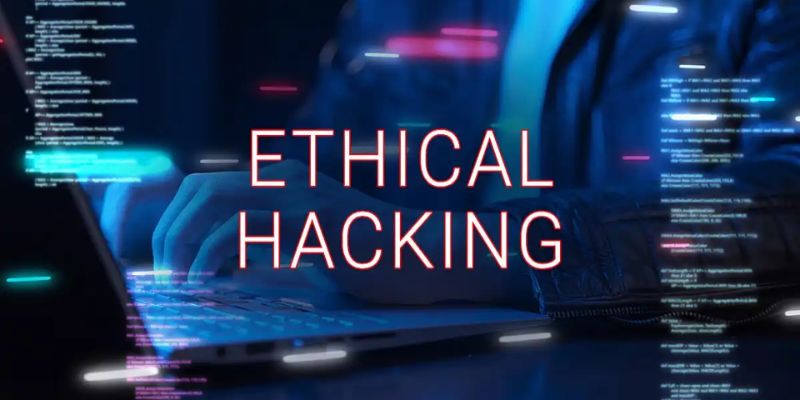
Hacking is often seen as a negative word, usually connected with stealing data or damaging systems. However, not all hackers are bad. Ethical hackers, also known as white-hat hackers, use their skills to protect systems instead of harming them. They help businesses and organizations find security problems before criminals do. On the other hand, malicious hackers, or black-hat hackers, break into systems for personal gain or to cause damage. Though both groups use similar tools and techniques, their intentions and outcomes are very different. Learning these differences is a core part of an Ethical Hacking Course in Coimbatore.
Purpose Behind the Action
The main difference between ethical and malicious hacking is the purpose behind their actions. Ethical hackers work with permission and try to protect systems by finding and fixing security flaws. Their goal is to strengthen the safety of networks, websites, and applications. Malicious hackers, however, act without permission. They try to steal sensitive data, install viruses, or disrupt services. Their aim is often financial gain, revenge, or simply causing chaos. So while both use hacking skills, their goals couldn’t be more different.
Legal and Professional Boundaries
Ethical hacking is completely legal and often carried out as part of a company’s security strategy. These hackers are hired by organizations to test their systems and help defend against real cyberattacks. They follow strict rules and get written approval before starting their work. Malicious hacking, on the other hand, is illegal. Black-hat hackers don’t ask for permission, and their actions can lead to serious legal consequences like fines or jail time. This legal difference is a clear way to tell the two types apart.
Tools and Techniques Used
Interestingly, both ethical and malicious hackers often use the same tools and techniques. They may scan networks, test passwords, and look for weak points in software. The difference is how they use these tools. Ethical hackers use them to report problems and suggest fixes, while malicious hackers use them to break into systems and take advantage. Even though the methods are similar, the intention behind their use changes everything. Gaining mastery over these tools responsibly is a focus of an Ethical Hacking Course in Madurai.
Training and Certifications
Ethical hackers usually go through professional training and earn certifications to prove their skills. Certifications like CEH (Certified Ethical Hacker) or OSCP (Offensive Security Certified Professional) show that a hacker understands both security and ethical rules. These trained professionals follow guidelines and always act responsibly. Malicious hackers don’t need to follow any rules or take formal training. Some of them are self-taught and use their knowledge for illegal purposes, often avoiding exposure and staying hidden from law enforcement.
Impact on Society and Organizations
Ethical hacking helps build a safer digital world. When ethical hackers discover weaknesses, they help companies fix them before harm is done. This protects personal data, financial systems, and national security. Malicious hacking, however, can cause massive damage. From stealing credit card information to shutting down entire networks, the results can be costly and dangerous. Ethical hacking brings positive change, while malicious hacking puts people and organizations at risk.
Motivation Behind Hacking
Motivation is another key difference. Ethical hackers are motivated by the desire to protect, learn, and support cybersecurity growth. Many are passionate about technology and want to make the internet a safer place. Some are even former black-hat hackers who have chosen to use their knowledge for good. In contrast, malicious hackers are often driven by money, fame, political beliefs, or the thrill of breaking into systems. Their actions are selfish and harmful, with little regard for the damage they cause. These motives and mindset shifts are discussed in depth in an Ethical Hacking Course in Pondicherry.
Recognition and Rewards
Ethical hackers often receive recognition and rewards for their work. Many companies run “bug bounty” programs where ethical hackers get paid for finding security issues. This encourages talented individuals to help rather than harm. Malicious hackers, on the other hand, work in secret. They avoid the spotlight because their actions are illegal. While they may make money in the short term, they risk getting caught and facing serious punishment.
Ethical Responsibilities and Accountability
An ethical hacker has a responsibility to follow professional standards. They keep the client’s data private, report only to the organization, and never misuse the information they find. If they break these rules, they can lose their job or certification. Malicious hackers don’t follow any such rules. They work independently and don’t answer to anyone. This lack of accountability makes their actions unpredictable and dangerous.
Ethical hacking and malicious hacking may look similar on the surface, but they are completely different when it comes to intention, legality, and impact. Ethical hackers use their knowledge to protect, while malicious hackers use it to harm. The digital world needs more ethical hackers to stay one step ahead of cybercriminals. By understanding the difference between the two, we can better appreciate the role ethical hackers play in keeping our systems safe and secure. Starting an Ethical Hacking Course in Tirupur is a great way to begin a rewarding and responsible career in cybersecurity.
Also Check:
How Is Artificial Intelligence Transforming the Landscape of Ethical Hacking?
